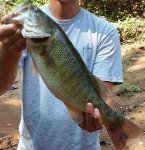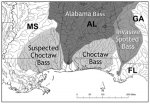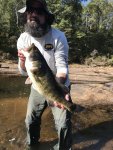Just to be clear the main reason you no longer have a catchable population of Shoal Bass between Buford Dam and Morgan Falls in the mainstem Chattahoochee is because it's an artificial coldwater fishery.
Where I fish is below the Lake Blackshear dam down to Lake Seminole. The spot I caught was a few miles south of the HWY 32 bridge on the Flint, at the foot of Abram`s Shoals.







